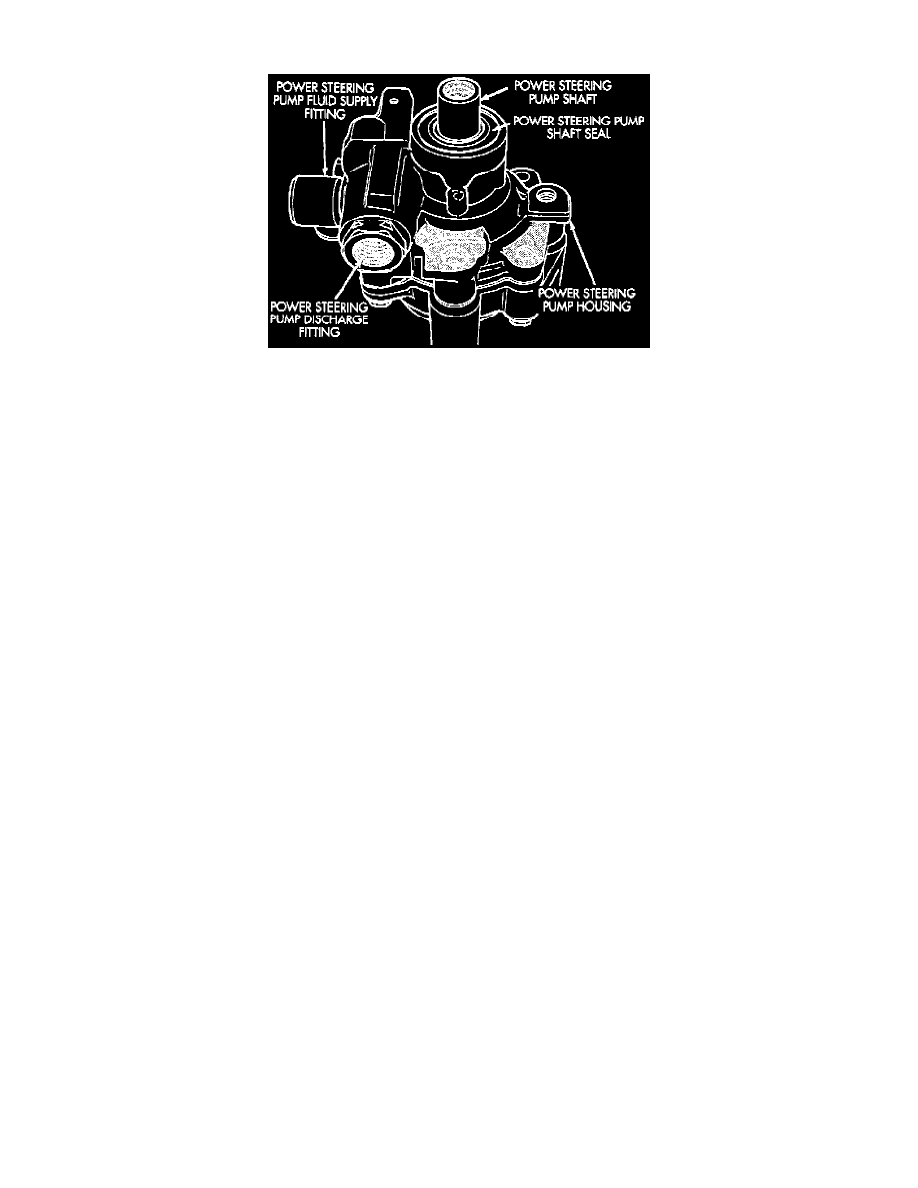Cirrus V6-2.5L VIN H (1995)

Power Steering Pump: Description and Operation
Fig.1 TTA Vane-Type Power Steering Pump
These models are equipped with a TTA constant displacement, vane type pump. The pump utilizes a remote fluid reservoir, mounted at the rear of the
cylinder head on the passenger side of the vehicle. In the event of a power steering failure, manual steering control of vehicle can be maintained.
However, under these conditions, steering effort will be significantly increased. No repairs are to be done on internal components of the TTA power
steering pumps.
All vehicles equipped with this pump have a remote mounted power steering fluid reservoir. On models equipped with 2.0L and 2.4L engines the
reservoir is mounted to the rear of the cylinder head on the passenger side of the vehicle. On models equipped with 2.5L engines the reservoir is mounted
to the front side of the engine between the cylinder heads.
Rectangular pumping vanes in the shaft driven rotor move power steering fluid from the intake to the cam ring pressure cavities of the pump. As the rotor
begins to turn, centrifugal force throws the vanes against the inside surface of the cam ring to pickup residual oil. This oil is then forced into the cavities
of the thrust plate through two crossover holes in the cam ring and pressure plate. The crossover holes empty into the high pressure area between the
pressure plate and the housing end cover.
As the high pressure is filled, oil flows under the vanes in the rotor slots, forcing the vanes to follow the inside surface of the cam ring. As the vanes
reach the restricted area of the cam ring, oil is forced out from between the vanes. When excess oil flow is generated during high speed operation, a
regulated amount of oil returns to the pump intake side through a flow control valve. The flow control valve reduces the power required to drive the
pump and holds down temperature build-up.
When steering conditions exceed maximum pressure requirements, such as when the wheels are turned against the stops, pressure built up in the steering
gear exerts pressure on the spring end of the flow control valve. The high pressure lifts the relief valve ball from its seat and allows oil to flow through a
trigger orifice located in the outlet fitting. This reduces pressure on the spring end of the flow control valve which then opens and allows the oil to return
to the intake side of the pump. This action limits maximum pressure output of the pump to a safe level.
Under normal power steering pump operating conditions, pressure requirements of the pump are below maximum, causing the pressure relief valve to
remain closed.
